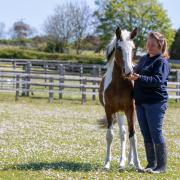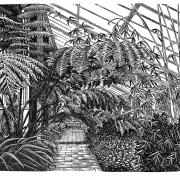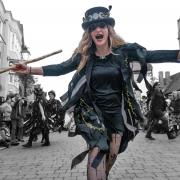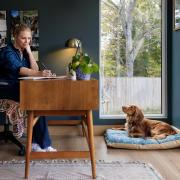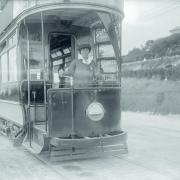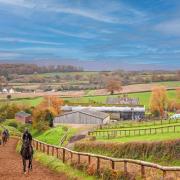How better to celebrate International Women’s Day than to honour the achievements of Somerset woman Margaret Graham, Britain’s first ever female hot air balloon pilot.
Ask anyone about famous Somerset women and the answer might be Mary Berry, born in Bath, or perhaps Game of Thrones star Maisie Williams, who grew up in Clutton.
One name which definitely won’t be mentioned is Margaret Graham, an astonishing Somerset woman who was very well known right across Britain in Victorian times but has now somehow disappeared, even from local history books. Margaret was just one of a handful of extraordinary British women I discovered during research for my book Magnificent Women and Flying Machines. The stories of the lives of these British women and how they broke away from tradition to achieve real firsts in various flying activities makes fascinating reading, and Somerset’s Margaret was amongst the very first.
Her life started off in a fairly traditional manner. Born in 1804 in Bath, she was a typical provincial girl from a hardworking family who went up to London in her teens to seek a more exciting life. When she met and then married George Graham, she perhaps found more excitement than she had anticipated! George was good looking, charismatic – and always short of money. His latest venture was ballooning; he had got hold of a secondhand balloon and basket and was trying to make money by charging spectators to watch the inflation. The balloon was old, George never bought quite enough gas to fill the balloon properly, and often the displays ended in failure. When they did work, though, the money from spectators was good.

One day Margaret went up for a short flight and thought it quite fun. For a woman in the 1820s, that alone was a brave thing to do. Then George hit on a brilliant idea… no woman had ever flown a balloon in England; in fact only one woman, a Frenchwoman, had ever flown a balloon before. What if Margaret flew the balloon? He could charge the spectators at least double to see a woman alone in a balloon! Feisty Margaret agreed. George put up posters and the novel idea of seeing a woman fly drew in crowds from right across London.
On the morning of the planned flight, in 1826, Margaret dressed carefully for her star role in a carefully chosen long dress and huge hat, and when she took off from parkland in North London, initially all went well. Soon though the old balloon started leaking gas. Margaret threw out all the sand she had on board but it was not enough and the balloon started to sink rapidly. She only cleared Islington church steeple by a few feet before descending rapidly onto an allotment behind an inn a few miles away.
On landing, Margaret gained the record of becoming Britain’s first ever female pilot. Instead of any applause for her flight, though, she was met by the local innkeeper who rushed out, red in the face and incandescent with rage. On landing, Margaret had ruined his vegetable patch and two days later Margaret ended up in court, having to pay substantial damages. For Margaret, however, that was just the start! A few weeks later her husband was thrown into prison for debt and Margaret was now on her own with several children to look after and no income. Instead of fleeing back to Somerset for family help, Margaret made an amazing decision. She still had the balloon, she would run the business herself! And that is what she did.

For the next 20 years, in the 1830s and 1840s, Margaret continued to give flying exhibitions all over the country, the only professional woman pilot in the world. Knowledge of flying was still in its infancy and Margaret had many mishaps, including once becoming the talk of England when her balloon flew into a building and she had to climb out of the basket into a top floor window. This was all viewed from the huge audience below and, with the strict morality of Victorian society, the fact that the spectators could see up her long skirt to her underwear as she clambered into the building was one of the major horror stories of the decade! Margaret continued to be a major topic of interest across England with her various escapades, including nearly knocking down the Crystal Palace at the Great London Exhibition in 1851. When she finally put her balloon to rest, a lot of England gave a sigh of relief. This Somerset woman had, however, certainly shown the world that women could fly!
Living in Somerset myself, I was delighted to be able to put together the full story of Margaret. With my long background in skydiving and ballooning, including setting up the world’s only all-girl parachute display team in a very male dominated activity,I could really appreciate what she had done. But this wasn’t the only extraordinary story I came across in my research and what was really interesting was that all the women I uncovered for my book had really fascinating stories along with their achievements.

For instance, the first British woman ever to parachute had started life in a Victorian workhouse. Hilda Hewlett, the first British woman to get an official pilot’s licence, had a totally restricted childhood dominated by a fanatically religious mother who followed her around, continuously preaching to her about sin, confession and remorse. She finally escaped her mother to marry and have children, and in 1909, when she was in her 40s, she heard about aeroplanes and loved the idea of flying. Her husband, though, forbade her to have anything to do with this dangerous, new fangled concept. Hilda, however, thought otherwise! She managed to arrange a secret loan, almost impossible for a woman to do in those days, and under a false name,took herself off to France to buy an early Farman biplane. She brought it back to Brooklands in Surrey and in August 1911, at the age of 47, Hilda passed her test to become Britain’s first ever qualified female British pilot.
It didn’t end there. Hilda was hugely patriotic and when the First World War came, she felt aeroplanes could help and she set up her own aircraft manufacturing factory, fighting numerous battles because she was a female operating in a man’s world. By the end of the war Hilda was employing 700 workmen and had made over 800 military aircraft for Britain’s war effort. What a woman!
And the stories go on, from Amy Johnson, who really only learned to fly after her long-term boyfriend announced out of the blue that he was married, right up to Helen Sharman, who only started her journey to become the first ever British woman in space after getting caught in a traffic jam on the way home from work! It was a pleasure to find out about these trailblazing British women, and I hope they achieve better recognition as part of March’s International Women’s Day – with of course special reference to Somerset’s Margaret Graham who showed staid Victorians just how much a ‘mere’ woman could really achieve! .

Along with many years involvement in parachuting and ballooning, Sally Smith is an experienced journalist and writer, starting her career as a foreign correspondent for the Daily Mail before working for the BBC and then ABC in Australia, and has lived in places as diverse as Cairo, Singapore, Tokyo and Perth in Western Australia before settling in Somerset. Her most recent book Magnificent Women and Flying Machines, is available from all good bookshops. Sally’s new book, The Women who Went Round the World, featuring the mainly untold stories of the women who have made groundbreaking circumnavigations, will be released by The History Press in July this year




